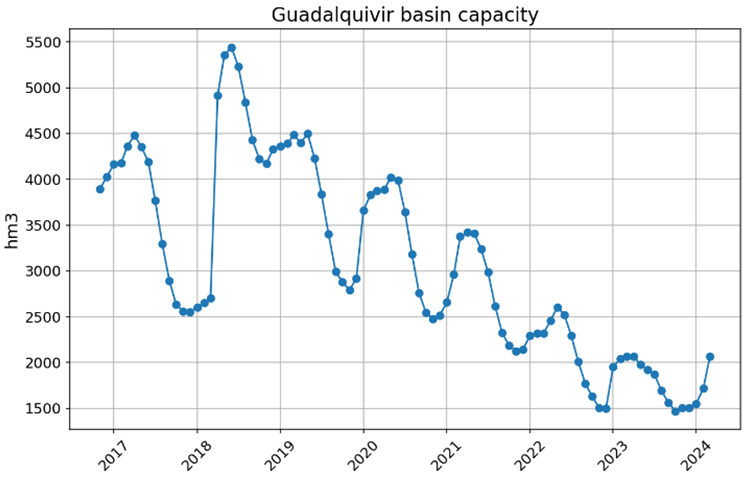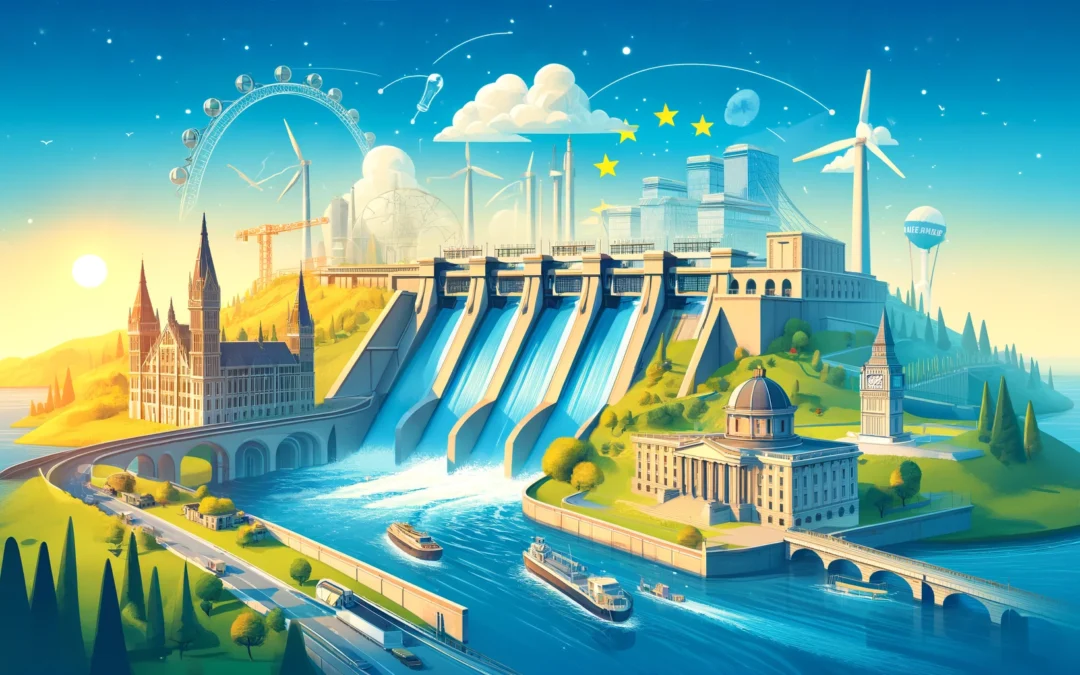The hydropower sector is a key driver of the energy transition in Europe. In 2022, renewable energies accounted for 41.2% of the total electricity consumption in Europe, with hydropower representing 29.9% of total renewable generation.
As more energy sources are integrated into the European energy landscape, hydropower plays an essential role due to its flexibility. While the generation from other renewable sources like solar or wind is subject to uncontrollable variable weather conditions, it is possible to decide when to turbine the water from a reservoir or river to generate energy. This way, the hydropower sector helps maintain stability in the electrical grid by balancing demand and generation.

In addition to its fundamental contribution to reducing CO2 emissions, this type of energy offers other environmental and socio-economic benefits. It regulates river flows through its dams, acting against flood threats and providing water supply for human consumption and the agricultural sector. Moreover, it can affect the development of local economies by generating employment, retaining human capital, and creating tourist attractions.
Emerging as a fundamental solution in Europe’s energy transition, hydropower is not without challenges and risks: One of the major challenges in Europe is the high age of infrastructures (an average of 45 years compared to 30 years in regions like Asia-Pacific or 15 years in China1), causing inefficiencies in energy production, increased maintenance stoppages, and production costs due to the need for investment and repair.
Additionally, climatic events are making their effects felt in all regions of the world. In Europe, many areas are experiencing more frequent, intense, and prolonged droughts. In the second half of 2022, this situation became evident with a significant reduction in hydropower production, particularly noticeable in the south of the continent, where a near 15% decrease in production was recorded.

This situation necessitates addressing intelligent management of water and hydropower resources. The iAMP-Hydro project (intelligent Asset Management Platform for Hydropower), coordinated by Trinity College Dublin and involving CARTIF, emerges as an innovative response to the challenges facing the European hydropower sector.
Within the framework of the project, a package of digital solutions based on artificial intelligence will be developed, validated in five hydropower plants distributed between Spain and Greece. These solutions will assist plant operators in decision-making by considering environmental and socio-economic factors.
The project includes a predictive maintenance solution through the development of advanced sensors capable of real-time monitoring of the state of turbines and installations. These devices will collect data which, through deep learning-based AI algorithms, will predict possible malfunctions before they occur. This will not only significantly reduce maintenance costs by up to 10% but also enable optimal scheduling of planned shutdowns adjusted to market conditions and socio-economic needs.
Furthermore, a set of specialized sensors will monitor various biodiversity parameters, ensuring that plant operations have the minimum possible environmental impact.

Lastly, CARTIF is leading the use of artificial intelligence techniques and neural networks to create predictive flow models. These models are designed to analyze patterns in historical data, including climate, and will be able to anticipate the potential energy a hydropower plant can generate over the next 7 days. This anticipation will allow for up to 23% more efficient plant operation, ensuring water availability while minimizing waste. In extreme drought situations like those in southern Europe, predictive models are being implemented to assess the short- and medium-term recovery capacity of hydroelectric reserves, considering various climate scenarios and irrigation demands. These models will provide operators with a clear vision of the plant’s evolution in the medium term and allow them to optimize the selection of the most suitable turbines for each operational scenario.
Researchers predict that iAMP-Hydro will improve the environmental and socio-economic sustainability of the current hydropower fleet by reducing operating costs by €1000 million, cutting CO2 emissions by 1,260 tons, creating 10,000 future jobs, and enabling environmentally sustainable flow regulation through digital solutions.
Current estimates show that digitizing the existing 1,225 GW of hydropower worldwide could increase annual production by 42 TWh, equivalent to $5000 million in annual operating savings2.
1 IEA. Hydropower Special Market Report; International Energy Agency: Paris, France, 2021; p. 126
2 Kougias, Ioannis & Aggidis, George & Avellan, François & Deniz, Sabri & Lundin, Urban & Moro, Alberto & Muntean, Sebastian & Novara, Daniele & Pérez-Díaz, Juan & Quaranta, Emanuele & Schild, Philippe & Theodossiou, Nicolaos. (2019). Analysis of emerging technologies in the hydropower sector. Renewable and Sustainable Energy Reviews. 113. 10.1016/j.rser.2019.109257
